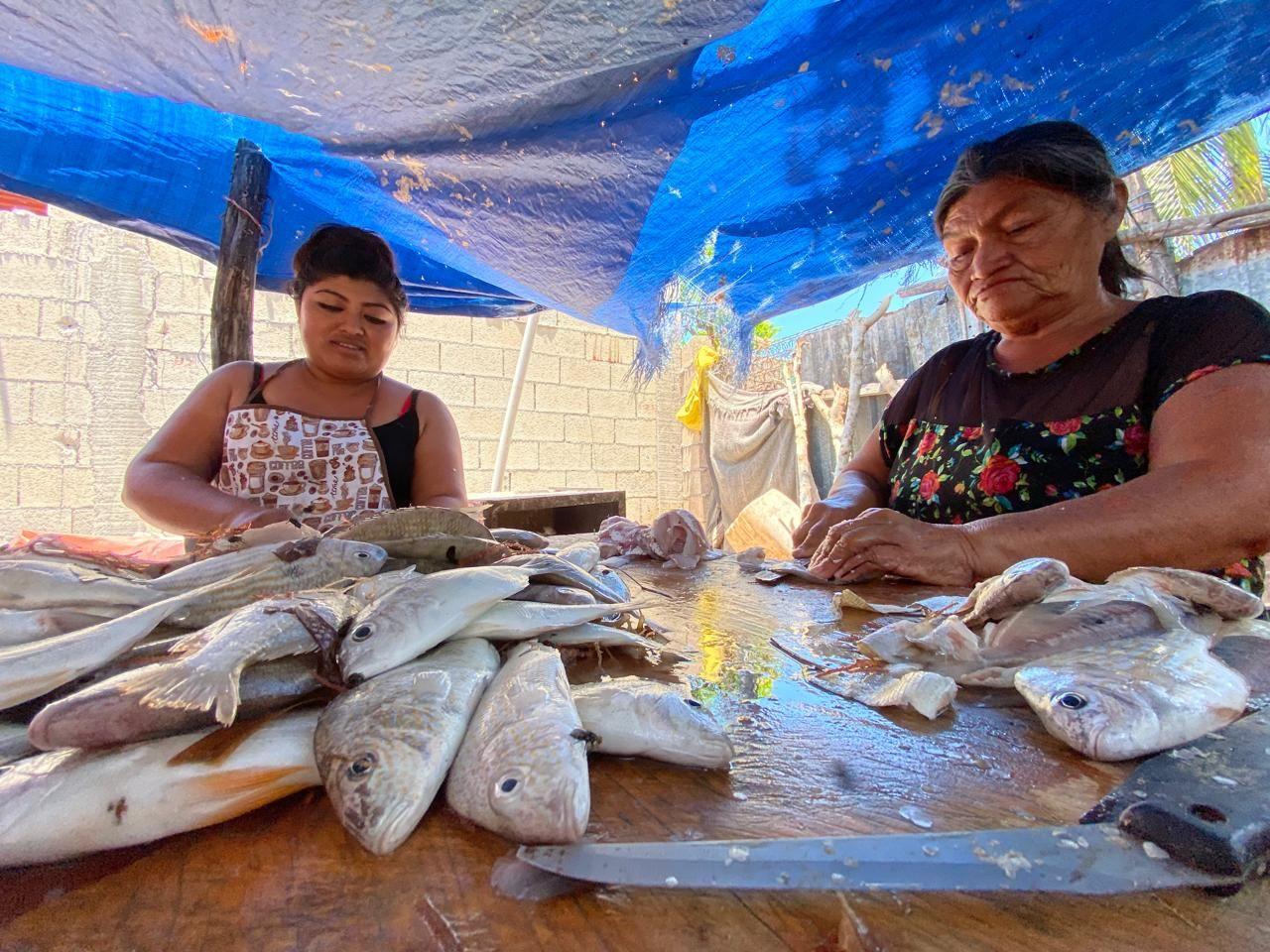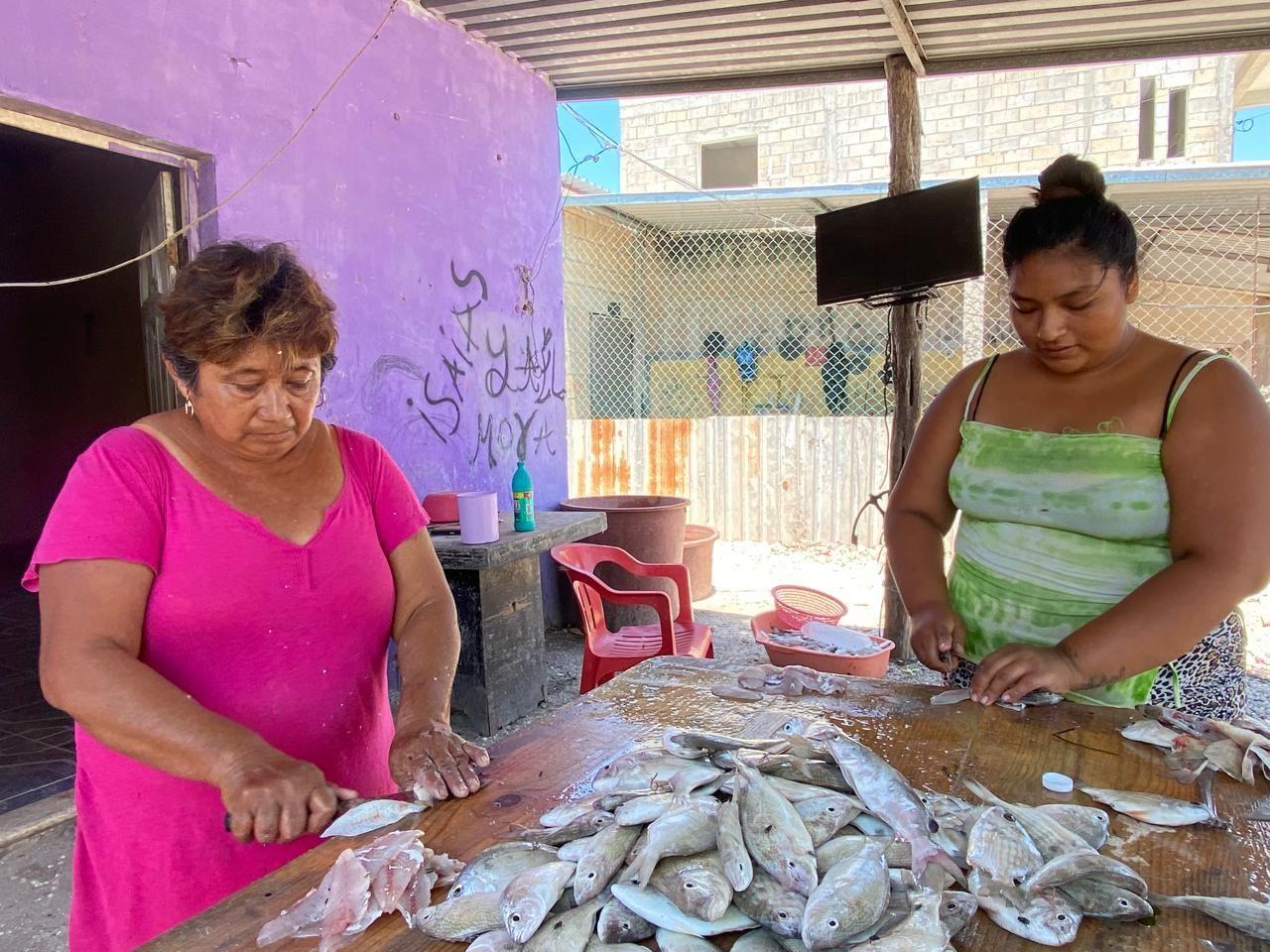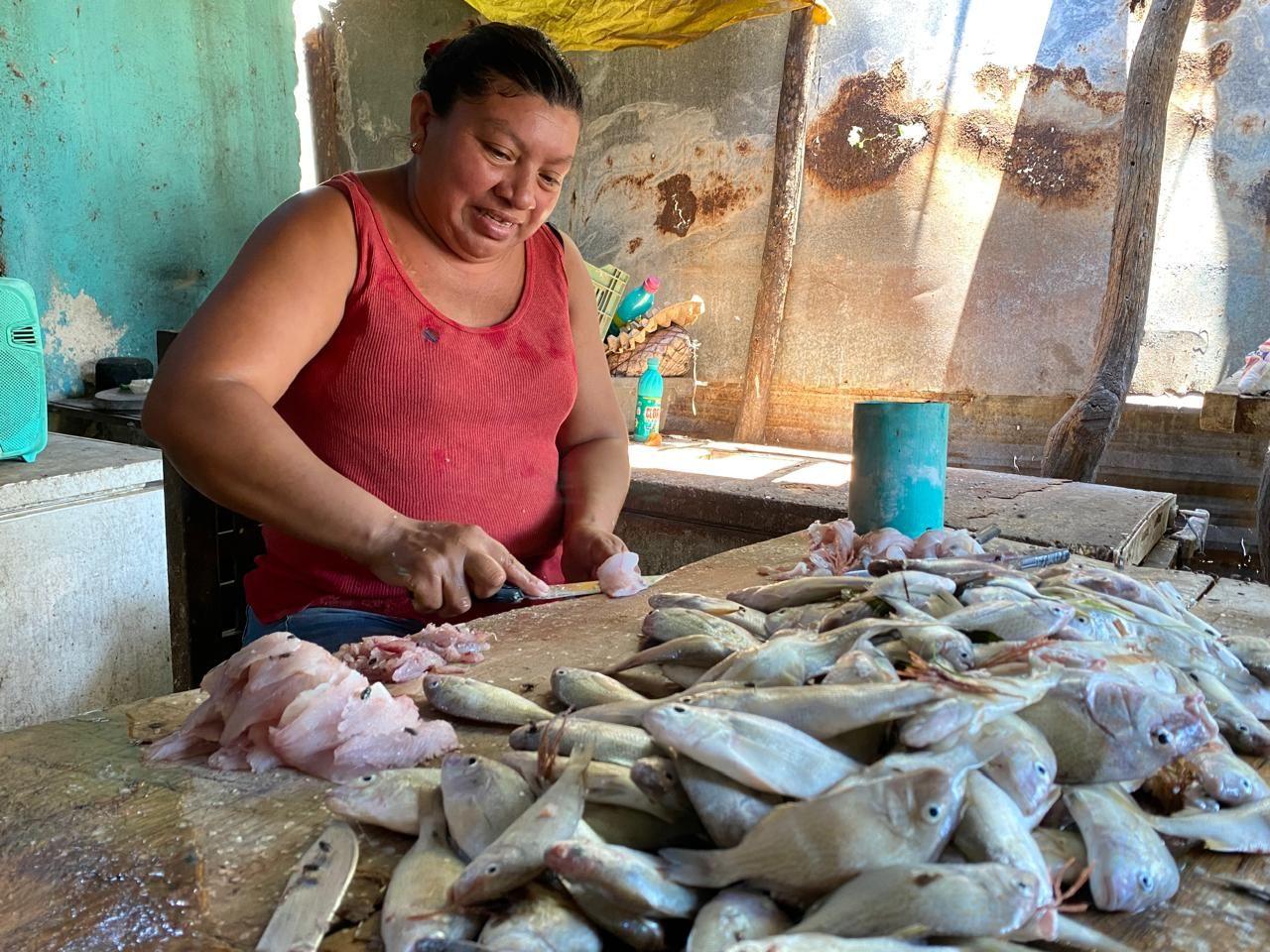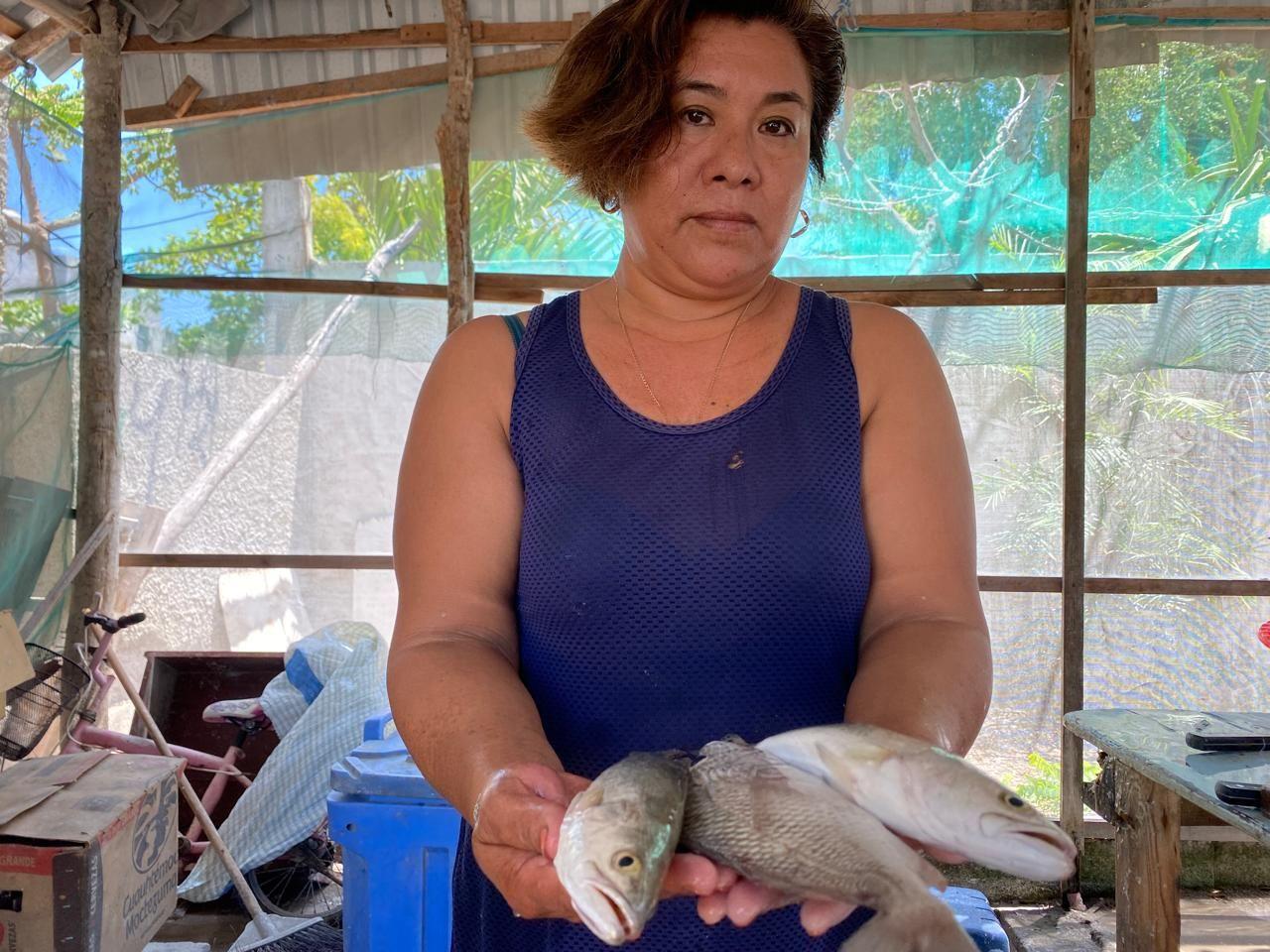Despite being the first to receive fish and seafood from the sea, women engaged in filleting in Yucatan highlighted the gender gap in the fishing sector, which is based on long hours with poor working conditions, motherhood and working at home.
Yucatan is a state renowned for its fish production. The Fishermen's Register has 12,700 people dedicated to this activity, only 360 are women, that is 2.80% of the register. However, this number does not represent the total number of those involved, said Claudia Durruty Lagunes, an academic at the National Autonomous University of Mexico (UNAM) in the local town Sisal.
“There is little talk about the work of filleting because it is not known. Fishing is associated precisely with extraction and not with processing. On the other hand, it has long been believed that women's work is not important to consider; that it must be done, but not recognized,” she lamented.

The work of the steaks involves carrying out night days. Source: Itzel Chan.
The researcher stated that women work of up to 15 hours filleting fish. However, when it is closed season, men receive 6,000 pesos as part of the program “I respect the ban 2025” and they, still nothing.
“In Yucatan, where the emphasis is placed on the wage gap, women are the most affected,” said María Paula Balam Aguilar, director of the Center for Justice, Democracy and Equality (Cejudi).

Currently, women filetakers do not receive financial support during closed seasons. Source: Itzel Chan.
Women, the most affected by the bans
During fishing closed seasons, work declines for women in fish filleting, severely affecting their livelihoods. On February 7, the Government of Yucatan published in the Official State Gazette the Agreement 08/2025, which details the operating rules of the subsidy program during the ban on grouing for filleters, but women dedicated to the activity say that they have not been registered.
María Poot has been involved in this activity since she was eight years old because her grandmother and mother were fish filleters. None of them received financial support or work tools during their working lives.
Today, María leads “Fileteras Unidas” (United Fish Filleters), a collective of 160 women fighting for recognition from state and federal authorities.
They meet in groups of 10 to 20 women to go to the ports to collect fish. They take the product home and continue in the early morning.
“Many are daughters of women who were dedicated to this. There are women of different ages, but the thing is that we all go at 2:00 or 3:00 in the morning to receive the fish. We line up to have the fish delivered to us and if there is good fishing we share the product among all of us,” he described.
The end of the day depends on the amount of product each one has, whether they finish at six in the morning if the product is not enough or at six in the afternoon if the day's catch was higher.
On average, they gather up to 15 kilograms of fish that each one sells in their homes and used for family expenses.
“It's a bit of a heavy job, but most of us do this because we can work at home and be with our children. This gives us time to cook and take care of our families, although with that the work never ends,” he said.

Women choose this job on the coast because they can spend time with their children. Source: Itzel Chan.
According to the National Time Use Survey (ENUT), two out of 10 women in Mexico work more than 48 hours a week. In addition, they dedicate 30.8 hours a week to unpaid domestic work, while men spend 11.6 hours.
“We don't have insurance, we don't have a salary and we don't have financial support when there are restrictions. We simply work alone to help and cover household expenses,” said María Poot.
Maria emphasized that the women she represents demand three key changes: official recognition of their profession, inclusion in the state labor registry, and financial support during fishing closed seasons.
According to the study Illuminating Unknown Harvests , although not all women go out to sea, 40% of the 60 million artisanal fishermen in the world are women. They are responsible for cleaning, preparing and marketing fish and they are also the ones who cook what fishermen eat out to sea.

Women have come to the Celestún City Council to be included in a register, but so far they have no answers. Source: Itzel Chan.
“When we ask for support for steaks, they don't give it. They don't even support us with tools; we have to buy our tables, knives, refrigerators, freezers, scales and everything we need for our work,” she said.
To address the above, the Sepasy Agreement 09/2025 stipulated the delivery of life jackets, GPS and civil radios for fishermen, but no support was included for filleters, which generates dissatisfaction among women. Luisa Marlene Chuil Mooh explained that their work requires long, grueling hours—a reality evident in the fact that many women have boosted their daughters and sons to progress.
Women do this activity to contribute to household expenses. Source: Itzel Chan.
“These are grown-up ladies who gave education to their daughters and sons, some of them have died and dedicated their entire lives to filleting and all without any support,” Chuil said.
Chuil estimates that in Celestún alone there are approximately 500 active filleting woman and regrets that their work is invisible because most of them work at home.
“A lot of us work when our husbands and children are sleeping because at dawn we have to prepare breakfast, take our children to school, we have to prepare food, do clothes, clean the house and these are things where we have to see how we do it to adapt our time,” she said.
The work of women in the entity is pigeonholed into household care: “The situation worsens when it comes to women in indigenous communities, trans women or women with disabilities,” said María Balam de Cejudi.
In 2025, fish filleting women hope to be taken into account for the first time for social support, since the Secretariat of Sustainable Fisheries and Aquaculture of Yucatán (Sepasy) carries out the census of fishermen.
“We would ask the government to look at us women steaks who are very supportive in fishing and in homes,” she said.
* This article was written by Itzel Chan, who covers coastal communities thanks to the support of the Report for the World program .




Comentarios (0)